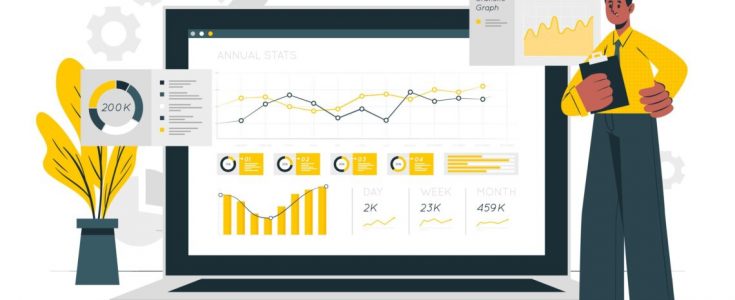
Image and Video Analytics led Digital Transformation in Manufacturing

As businesses transition from the effects of the pandemic to the new normal, Enterprises are looking for AI based automation & ways to improve efficiency and reliability of their manufacturing processes. Solution around Image & Video processing is one of the key areas of interest. With margins getting smaller and competition getting more intense, manufacturing companies are getting smarter about how they can become more productive to become more profitable. Companies may rely on cutting-edge Image and Video analytics platforms to achieve new levels of productivity, safety, and agility by unlocking AI-driven insights from the data they have gathered.
A wide range of industries are interested in intelligent & scalable image and video analytics solutions, and advancements in deep learning have made it easier to automate tasks that were previously human dependent. Manufacturing is one of the industries that can benefit from Computer Vision technology based image and video analytics. Analytics, whether on a camera or on a server, can help factories improve their safety, inventory management, efficiency, and even defect detection.
How can Image and video analytics help manufacturing?
1. Increase Operational efficiency by proactively reducing downtime
Image and video analytics can help a manufacturing facility increase productivity, reduce downtime, and ensure employee health by improving operations and management efficiency. Smart cameras equipped with business intelligence applications can help reduce downtime by anticipating potential interruptions or bottlenecks and alerting employees in real time, allowing them to take immediate action.
These cameras can be outfitted with apps that analyse overall production flow to identify specific bottlenecks or delays on the factory floor. The video clips and images, along with some additional equipment information, will be uploaded to the cloud, where they will be analysed and processed. Manufacturers will be able to determine whether a specific piece of equipment is about to fail after processing the data.
2. Automation in quality control for goods and Inventory management
All manufacturers strive to provide their customers with high-quality products. Product inspection and quality control are thus critical manufacturing activities that must not be overlooked. Manually performing these tasks can be time-consuming, repetitive, and inaccurate when performed by humans, as defects are not always visible to the naked eye. All these issues, however, can be avoided with computer vision systems. Manufacturing firms can optimise and streamline these processes in a much shorter period.
It can also help manufacturers concentrate more on inventory management, which can be aided by analytics. The higher the output and the more goods produced, packaged, and shipped each day, the more difficult it is to keep track of. Smart cameras with AI-powered video analytics applications are used to manage large inventories in warehouses, and cameras can be mounted on drones that move autonomously through inventory and scan barcodes for data in cases where cameras aren’t permanently installed in buildings.
3. Manage Product Assembly in smart factory
In the manufacturing Industry, computer vision applications play a vital role in product and component assembly. The bulk of the manufacturing industry has been adopting computer vision as part of industry 4.0 automation to undertake completely automated product assembly and management procedures. It is commonly known, for example, that Tesla’s production process is over 70% automated. Computer-aided software is used to develop 3D modelling designs. The computer vision system precisely coordinates the assembly process based on these designs. Computer vision systems constantly watch and direct the robotic arms and assembly line workers.
4. Improve worker safety
Workers’ safety and maintaining a safe working environment are top priorities for manufacturers. Manufacturing companies must constantly improve their safety programmes and provide the safest working conditions possible. Image and video analytics can help manufacturers improve worker safety while also streamlining operations.
This could include capabilities such as real-time image processing, which captures images of workers and their actions in real time. The data is then fed into an analytics program, which analyses and processes it. The results will reveal whether workers are in a dangerous and potentially fatal situation. Concerned officers can be notified of the hazardous site environment, allowing them to take appropriate action at the appropriate time. As a result, by detecting environmental risks or hazards, these analytics platforms can assist manufacturing companies in avoiding future mishaps.
Apexon’s Image & Video Analytics system handles all the necessary tasks, including building, labelling, training, designing, and deploying. We not only offer pre-built components that may be customized, but we also have a tech-savvy team to assist with the design and deployment of the solution – full-stack development that includes mobile platforms. Our Image Processing and Computer Vision experts have the technical skills and domain understanding required to build production-grade models and deploy them for a wide range of use cases. With our unique accelerators, pre-built solutions, proprietary AI models, and scalable analysis, we help you improve your efficiency and productivity by covering your whole data spectrum.
To know more visit, data visualization